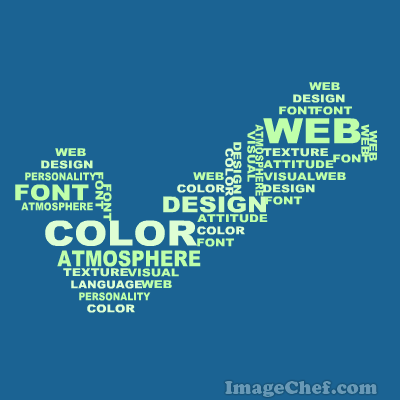Web Shop Manager - Personal Website Designs
Being a web designer isn't just about creating a functional website that serves its purpose, obviously that’s a major part of it, but it isn't the end of the road. A designer of any kind has the extremely unique ability to utilize emotions, and the decisions these emotions lead people to make.

The average consumer isn’t just looking for a product. At face value that may seem like the case and the consumers themselves may even think it to be true, but there’s more to it than that. Subconsciously, they’re also looking for a positive and interesting experience and a user friendly web design. Whether it’s walking into a clothing store that has an awesome atmosphere, or landing on a website with a comforting and pleasant feel to it, people react emotionally these things. In the process of hiring a web design company, a primary concern should be creating something that is not just a website, but a user experience.
Visual Language: “Visual Language” as a concept involves much more than the actual language (as most would use the word) that is being used on the website. It’s the way the site presents itself to you-- the “vibe” you get from it, so to speak. There are a lot of subtle things you can do or small design choices you can make that will completely change the visual language that the website presents to users that create personal website designs. For example:
Color: The way that color affects people on an emotional level makes it one of the most powerful tools in web design. Have you ever noticed how certain colors seem to be more prevalent in individual industries? It’s not a coincidence! Colors like red, yellow, and orange evoke feelings of excitement and passion. On the other side of the spectrum, cool colors like blue and purple encourage calm and serene feelings. These emotions and effects are subtle, but very real. Use color schemes the mesh well with the message you are trying to send site visitors and add nice touches to your personal web designs.
Texture: Texture in web design is a very interesting concept, because the traditional use of the word refers to a tactile sensation; something you can actually feel. However, the use of visible texturing allows us to create strong feelings by tapping into the emotions of site visitors. Using a texture that resembles dirt with tire tracks running across it on a 4x4 off-road website can evoke powerful emotions in the target audience for that kind of site. Chances are they have memories associated with a similar looking environment, and the texture alone may be enough to bring them back. These positive memories make the user feel welcome on your website, and encourage them to stay a while.
Font/Text Display: Take a second to consider how much text is used throughout the average website. A lot! This fact alone demonstrates how easily using different fonts can change the entire atmosphere of your website. That doesn't mean it’s always a good idea to choose a wacky font, because readability should always be a main concern in your web design process. But there are tons of unique choices for font out there, and you may find that switching it up can improve overall visitor satisfaction! If you are designing for a bank, a Fortune 500 company, or anything that relies on exuding professionalism then yes, it’s probably a good idea to stick to the standard simple fonts. But if you’re dealing with something like a day care facility, consider using a sillier font type with rounded edges. As long as it’s easy to read, this kind of font can immediately create a comforting and happy feeling in the visitor.
Attitude: Finding a good balance in the attitude used on a website can be tricky at times. In this instance, attitude refers to the way you communicate with your site visitors. Are you writing content that is lighthearted and humorous? Or are you keeping it professional and to the point? Neither is the right or wrong choice, it all depends on the industry and the kind of relationship you want to have with users. And it doesn't have to be portrayed solely through written content either, using different text on call to action buttons is a great example of this. Instead of your contact button saying “Contact Us,” it could say something like “Get to Know Us!” This extremely simple design choice has a drastic effect on the site’s attitude, and will often times make the visitor feel more welcome.
By: Dana Nevins
BEDSLIDE - Client Testimonial
"The best thing out of everything was that our sales went up. The new site had a better design, the checkout process was better, and ultimately achieved all of our goals. That site has been up for a year and a half and we’re very happy with it, it’s still awesome." - Jake Plappert